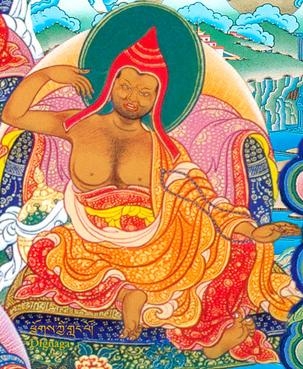Dignaga: Difference between revisions
Jump to navigation
Jump to search
No edit summary |
No edit summary |
||
| Line 1: | Line 1: | ||
[[Image:Dignaga.JPG|frame|'''Acharya Dignāga''']] | [[Image:Dignaga.JPG|frame|'''Acharya Dignāga''']] | ||
'''Dignaga''' (Skt. Dignāga; Tib. | '''Dignaga''' (Skt. Dignāga; Tib. Chok kyi Langpo; [[Wyl.]] ''phyogs kyi glang po'') (circa 6th century AD) was one of the six great commentators (the ‘[[Six Ornaments]]’) on the Buddha’s teachings. | ||
He was one of the four great disciples of [[Vasubandhu]] who excelled their teacher each in a particular field. He excelled him in [[pramāṇa]]. | He was one of the four great disciples of [[Vasubandhu]] who excelled their teacher each in a particular field. He excelled him in [[pramāṇa]]. | ||
Revision as of 13:46, 15 July 2008

Dignaga (Skt. Dignāga; Tib. Chok kyi Langpo; Wyl. phyogs kyi glang po) (circa 6th century AD) was one of the six great commentators (the ‘Six Ornaments’) on the Buddha’s teachings.
He was one of the four great disciples of Vasubandhu who excelled their teacher each in a particular field. He excelled him in pramāṇa.
His early (extant) works were:
- The Abhidharmakoša-marma-pradīpa - a condensed summary of Vasubandhu's seminal work
- A brief summary of the Aṣṭa-sāhasrika-prajñā-pāramitā-sūtra
His remaining works were all pertaining to logic:
- Ālambana-parīkṣā
- Trikāla-parikṣa
- Hetu-cakra-samarthana
- Nyāyamukha
- Pramāṇa-samuccaya, which was a condensation of all these works
His reputation as unequalled in debate was cemented through his celebrated victory over the bramhin named Sudurjaya at Nālandā monastery.
Among his disciples was Išvarasena, who later became the teacher of Dharmakīrti.